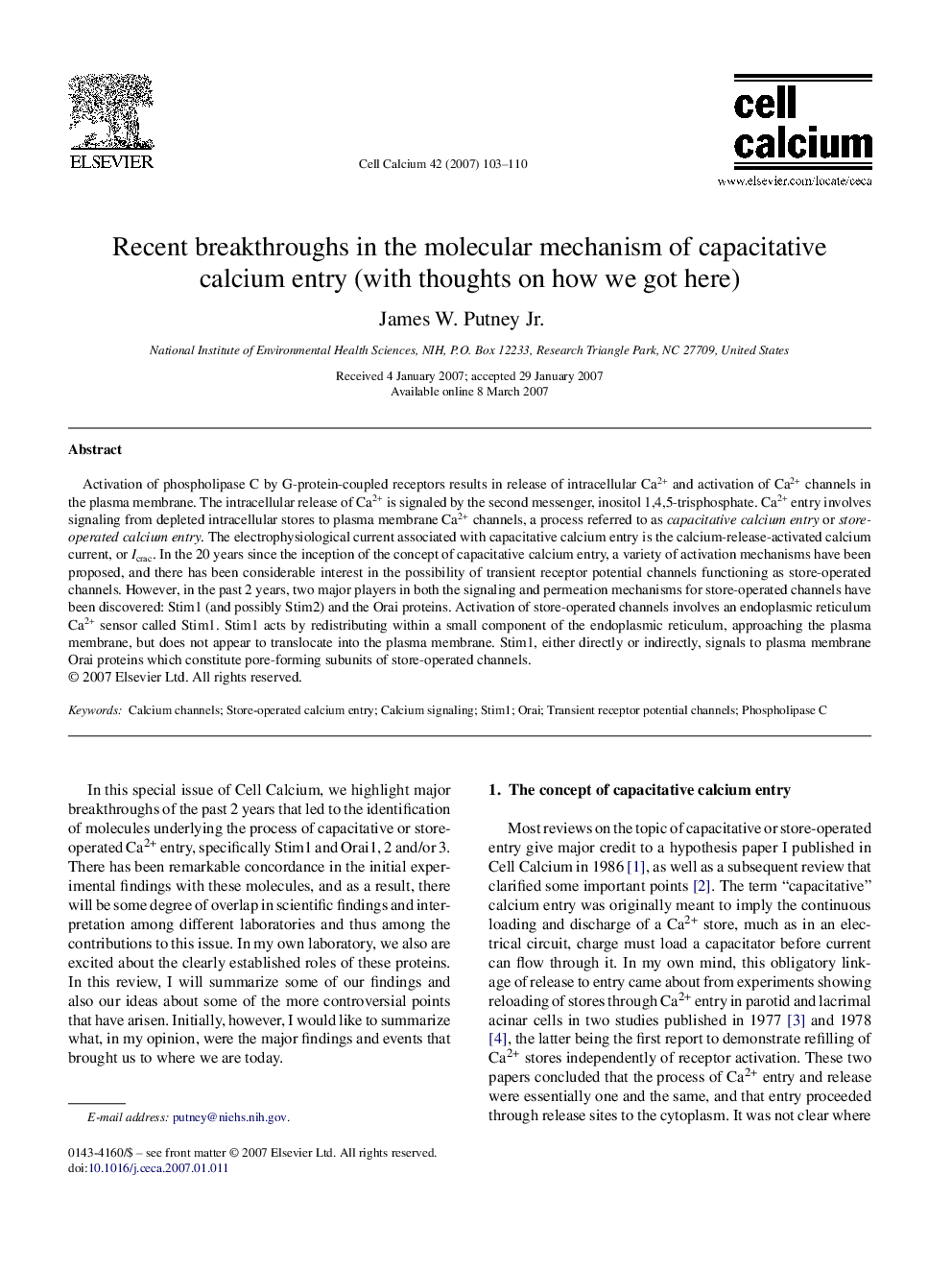| Article ID | Journal | Published Year | Pages | File Type |
|---|---|---|---|---|
| 2166577 | Cell Calcium | 2007 | 8 Pages |
Activation of phospholipase C by G-protein-coupled receptors results in release of intracellular Ca2+ and activation of Ca2+ channels in the plasma membrane. The intracellular release of Ca2+ is signaled by the second messenger, inositol 1,4,5-trisphosphate. Ca2+ entry involves signaling from depleted intracellular stores to plasma membrane Ca2+ channels, a process referred to as capacitative calcium entry or store-operated calcium entry. The electrophysiological current associated with capacitative calcium entry is the calcium-release-activated calcium current, or Icrac. In the 20 years since the inception of the concept of capacitative calcium entry, a variety of activation mechanisms have been proposed, and there has been considerable interest in the possibility of transient receptor potential channels functioning as store-operated channels. However, in the past 2 years, two major players in both the signaling and permeation mechanisms for store-operated channels have been discovered: Stim1 (and possibly Stim2) and the Orai proteins. Activation of store-operated channels involves an endoplasmic reticulum Ca2+ sensor called Stim1. Stim1 acts by redistributing within a small component of the endoplasmic reticulum, approaching the plasma membrane, but does not appear to translocate into the plasma membrane. Stim1, either directly or indirectly, signals to plasma membrane Orai proteins which constitute pore-forming subunits of store-operated channels.
